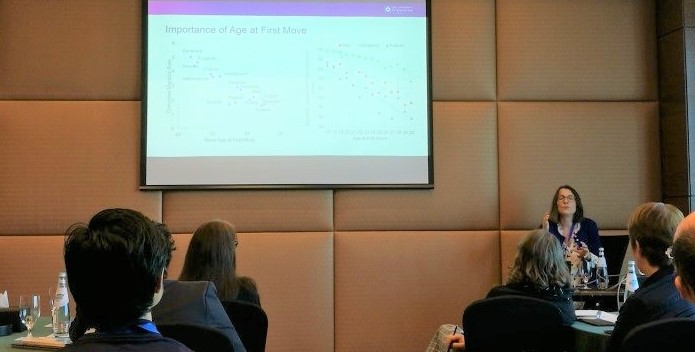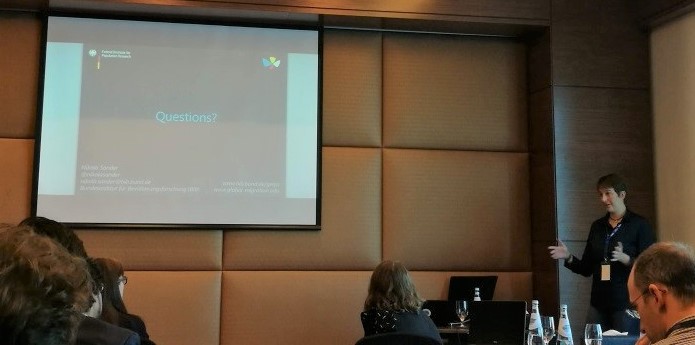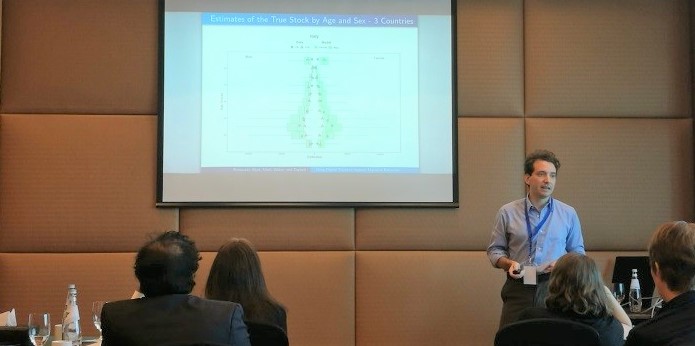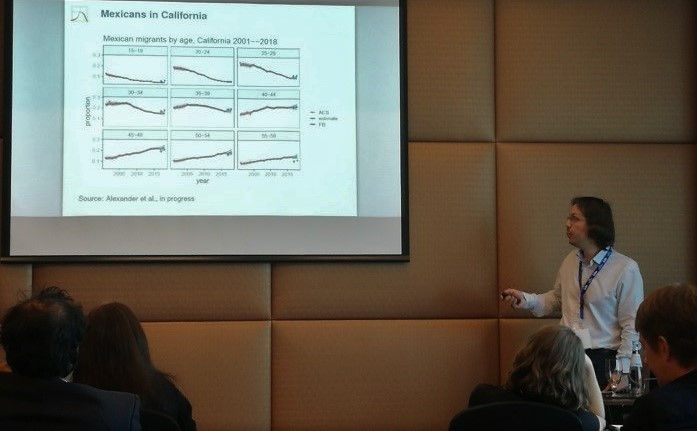Computational Methods and Data Sources for Migration Research in the Digital EraDoha, Qatar, 18 November 2019
Organizers: Emanuele Del Fava and Emilio Zagheni (Max Planck Institute for Demographic Research).
The pre-conference workshop on Computational Methods and Data Sources for Migration Research in the Digital Era was organized by the Max Planck Institute for Demographic Research (MPIDR) in collaboration with the IUSSP Scientific Panel on Digital Demography and held at the Hilton Doha Hotel, Doha, Qatar, on 18 November 2019, just before the 11th International Conference on Social Informatics (SocInfo 2019).
The goal of this workshop was to facilitate a conversation about improving migration data collection and developing new modeling approaches. For this purpose, the workshop brought together social scientists interested in the estimation of internal and international migration flows with data scientists and statisticians who were familiar with strategies for inferring information on migration from new forms of digital data and with modeling approaches for integrating different data sources.
The workshop included three sessions, which were devoted to internal migration, international migration, and new data sources, respectively. A total of 21 participants took part in the workshop, coming either from different academic backgrounds (demography, sociology, computer science, and statistics) or from governmental institutions, but all with a keen interest in migration studies and, in particular, on migrant population estimation. The audience was also very diverse in terms of provenance, as the participants came from Europe, the US, Middle East, South America, China, Australia, and New Zealand. This diversity was evident not only from the geographical provenance but also from the interest in the migration phenomenon in several world areas.

The first session, dedicated to internal migration, included two talks. Aude Bernard, from the Queensland Centre for Population Research in Brisbane (Australia), gave an overview of the IMAGE project, which was devoted to the gathering of data on internal migration around the world and to the development of statistical measures to assess the level of internal migration both within and between countries. Then, Lee Fiorio, from the Center for Studies in Demography and Ecology at the University of Washington in Seattle (US), presented his work, where he focused on the reasons behind immobility, rather than mobility, in the US context. Using both Twitter and administrative data, he found a robust link between parent and child rootedness and the lack of interest in mobility among young adults.

The second session, dedicated to international migration, also included two talks. Nikola Sander, from the Federal Institute for Population Research in Wiesbaden (Germany), introduced the audience to the GERPS Panel Study, which was recently carried out on German emigrants from Germany, with a focus on one's life course. This survey was designed with the specific intent to overcome the frequent issue of lack of data on emigrants and to elucidate on the reasons behind emigration. Joel E. Cohen, from the Rockefeller University in New York City (US), presented an application of a statistical approach for longitudinal data, commonly used in epidemiological studies, to the prediction of migration flows, to be tested using data on migration life histories.



As the audience mainly consisted of researchers and experts in the field of migrant population estimation, the six panelists were able to stimulate a thought-provoking discussion among the audience. Here it is an incomplete list of the questions collected during this workshop: the existence of interconnections between internal and international migration; the potential use of digital data for measuring not only migrant stocks but also migrant flows; the statistical challenges faced by the development of online Facebook surveys; the possibility of forecasting both migrant stocks and flows.
See:
|
